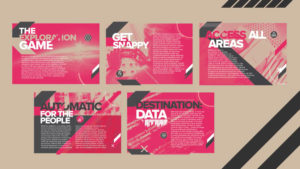Mindshare UK previewed their Trends for 2018 – identifying the top five trends for marketers to watch for over the next 12 months, during their Huddle in London on November 9. A comprehensive report will then follow on December 5th exploring the trends in detail, their role in consumers’ lives, and their implications for the world of media and marketing in the next year.
Created by the Mindshare Futures team, the trends have been identified through a unique consumer centric research design that places people firmly at the heart of the approach. For the 2018 trends, Mindshare Futures have:
- Conducted surveys with over 6,000 consumers aged 18+ across the UK.
- Carried out social and search behavioural analysis to gauge people’s implicit emotions by looking at what they are saying and actively doing online
- Ran qualitative exercises across the country to explore why people think and behave in the way that they do
- Used mobile online diaries to gather thoughts and behaviours from all over the UK.
This soon to be released report will explore not only how opinions and behaviours around the trends differ between different demographic groups in society, but also how they vary in adoption and interest levels across the UK – with analysis from London to Land’s End to Aberdeen. It will also track how the Trends have changed from previous years’ studies.
 MindShare’s 5 Trends for Brands to Consider in 2018:
MindShare’s 5 Trends for Brands to Consider in 2018:
Get Snappy
Our culture has become increasingly visual. We are becoming so accustomed to seeing and communicating with emoji’s, pictures and videos, it is becoming second nature to think in this way. Combine this with the rapidly improving image recognition capabilities of AI, we are set to see further developments in areas such as visual search, code scanning and facial recognition.
The Exploration Game
We are a naturally curious bunch and technology allows us to explore – providing opportunities to discover, imagine and visualise things in new and different ways. Whether it’s algorithms recommending new music, virtual assistants suggesting new recipes, smart mirrors helping us visualise an outfit or AR apps enabling us to try before we buy. With life becoming increasingly busy, ordered and predictable, technology is now injecting a bit of fun, imagination, and inspiration into the everyday.
Access all Areas
Mobile has made us accustomed to accessing things when and wherever we want them. This mindset is set to amplify further with the arrival of even more access points – think hearables, home and in-car assistants, connected surfaces and AR glasses. Eventually, interfaces will become so well integrated that we will start to think beyond devices – they will simply exist all around us, capturing input automatically without us even realising.
Automatic for the People
With 100,000 chatbots on Facebook Messenger, in-store virtual assistants guiding shopping experiences, walk in stores that are staff free and run entirely by technology, human interaction is on the decline. But how welcome is this technology? Despite the headlines on robots taking over and our jobs being wiped out, people’s reactions are not as extreme as we have been led to believe. We all want an easy life. In many cases, technology isn’t always matching up to the promise of easier solutions just yet but when it does get it right, it’s an acceptable choice for many.
Destination: Data
For many of us, there is a sense of inevitability when it comes to that data exchange. If we want these goods, this service or that amazing piece of technology, we need to supply some sort data in return – and by and large, if we are getting the right things in exchange, we don’t question this too often. Not many of us are proactively doing things to secure or manage who has access to our data and for what purposes. This doesn’t mean we don’t care – it’s just not on our radar or priority list yet.
Source: Mindshare

You must be logged in to post a comment Login